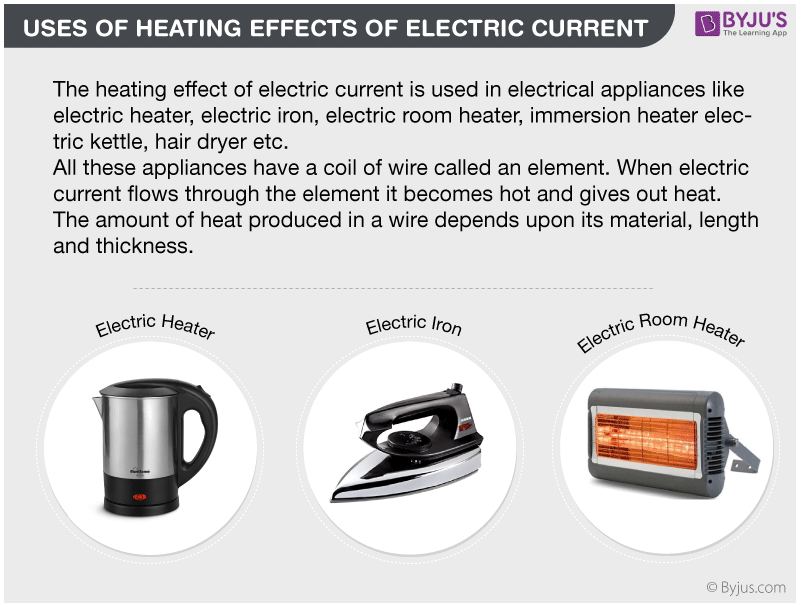The heating effect of current can be observed in our day-to-day life. According to the law of conservation of energy, the total energy in a system is always constant. This is the concept we make use of when we use electricity to power a phone or a television or a car. We are converting one form of energy into another.
| Table of Contents |
How does Heating Effect of Current Work?
Have you noticed that when you overuse your phone, it starts becoming warm? This is because when we convert electricity to other forms of energy, some energy is converted to useful work, but a certain amount is converted to heat energy. This is the heating effect of current. This is called Joule heating, ohmic heating, or resistive heating.
This phenomenon was observed by James Prescott Joule in the 19th century. He passed a current-carrying wire through water and noted the rise of the water’s temperature for a span of 30 minutes. He tried different combinations of wire lengths and the amount of current flowing through them. He finally deduced that the heating effect of current is proportional to the current flowing through the wire and the resistance value of the material. This kind of heating does not depend on the direction of the current flow.
The amount of heat generated (H) is given by the following relation.
H ∝ I2Rt
where,
I is the electric current through the component
R is the resistance
t is the time span of heat generation
The below video provides NCERT line by line explanation of the chapter Electricity Class 10

Applications of Heating Effect of Current

- The Electric Bulb: The filament bulb is such that the inner core filament (mostly tungsten as it does not melt easily) is heated up to a certain temperature after which it is illuminated.
- The Electric Iron: Bimetallic plates and applying the heating effect of current helps the iron break the flow of electricity when a certain temperature is reached. You may have noticed this when the red light on an iron box comes on and off.
- Electric Heater: Similar to that of an iron box but here, a circuit breaker is used
- The Electric Fuse: Copper or zinc can be used as the fuse element. When there is an excess of current flow through the electrical circuit, the heat generated increases as well and melts the fuse, thereby breaking the circuit.
Watch the video and solve important questions in the chapter Electricity Class 10

Frequently Asked Questions – FAQs
What is the heating effect of current?
What are the dimensions of a physical quantity?
- The resistance (R) of the conductor.
- The time (t) for which the current flows
- The amount of current (I)
What is current electricity?
Give two examples of heating effect of electric current.
(2) Electric iron: It is made of alloys. Alloys have a high melting point.
What are the different modes of heat transfer?
- Conduction
- Convection
- Radiation
Watch the video and solve previous year questions in the chapter Electricity Class 10 Science

Stay tuned with BYJU’S for more such interesting articles. Also, register to “BYJU’S – The Learning App” for loads of interactive, engaging Physics-related videos and unlimited academic assistance.


Comments